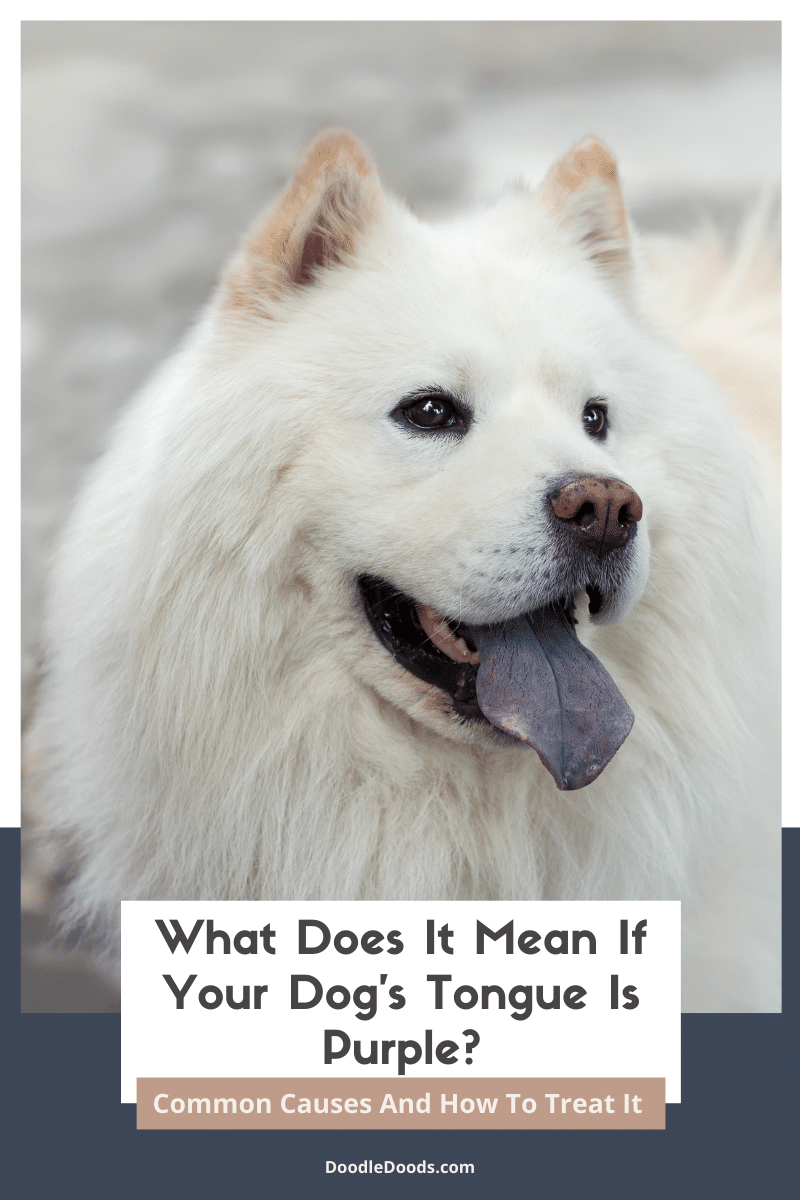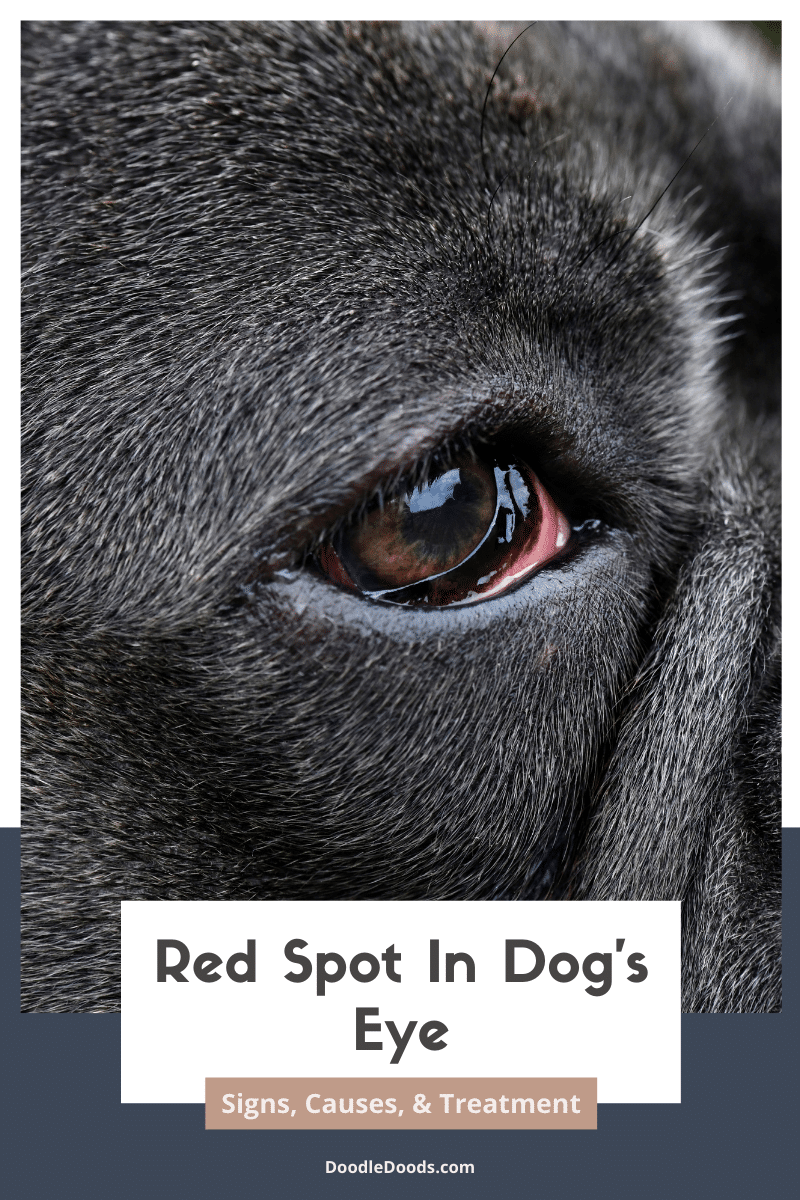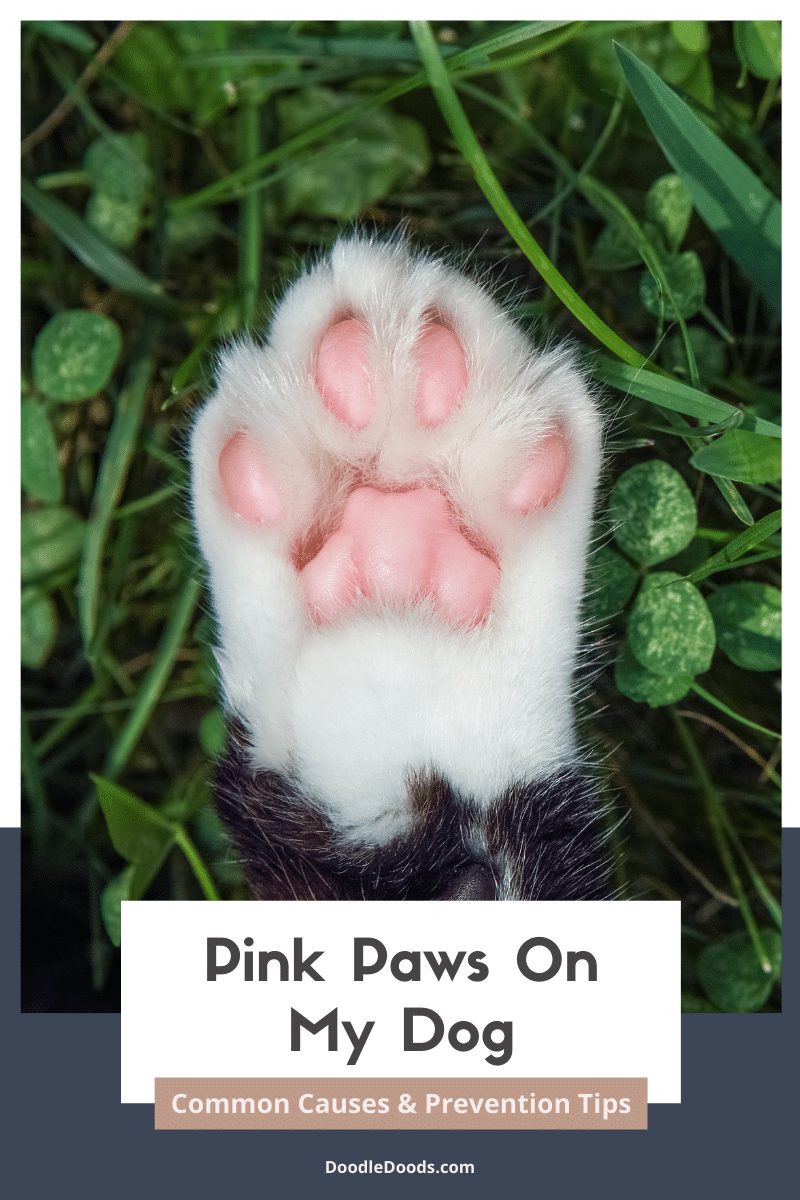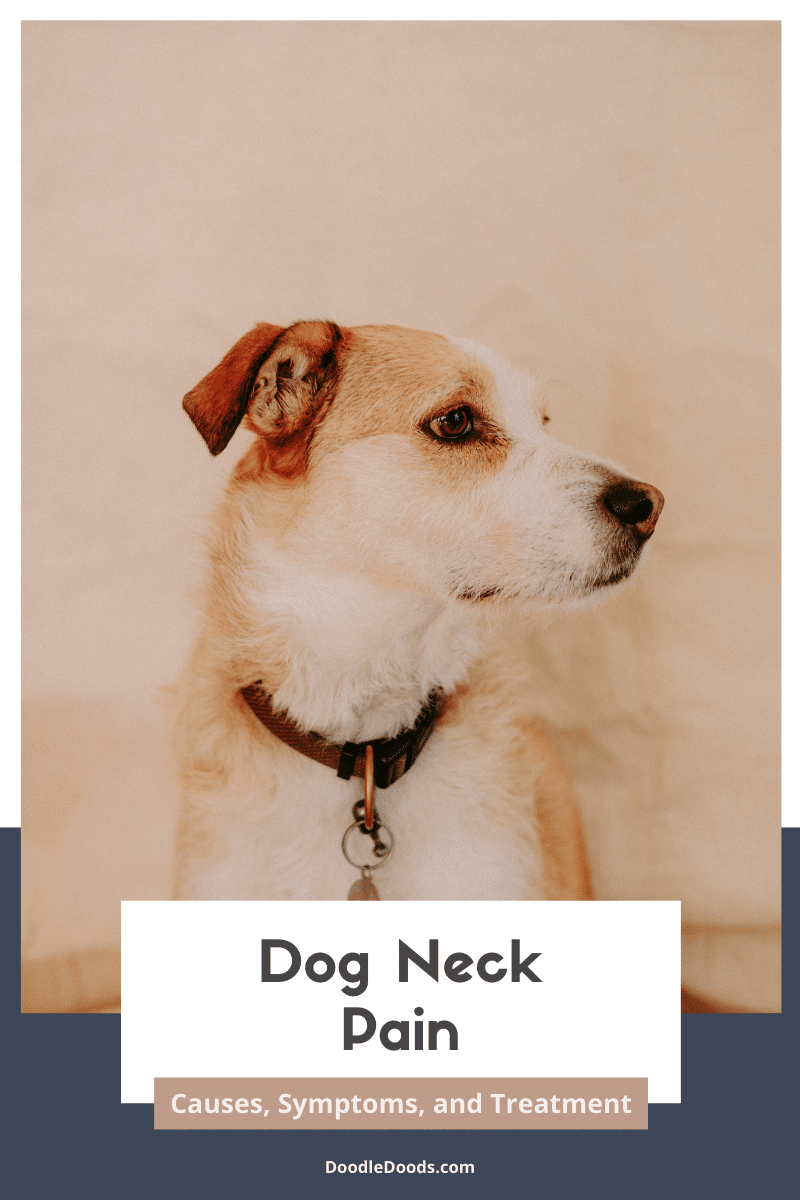The inside of a dog’s mouth – the tongue, teeth, and gums – can provide a pretty good indication of their general health. If asked about the color of a dog’s tongue, you would likely answer pink, as this is usually the case. However, occasionally we might see other hues on our pet’s tongue. This might be completely normal, or it could tell us that they need to see a vet. If your dog has a purple tongue, that may be a sign of low oxygen in their blood called hypoxia, typically caused by a heart condition or a circulation problem.
Now, before you start panicking, here we will take a look at what it might mean if your dog’s tongue is purple and whether you need to be concerned about it or not.
Table of Contents
- Dog Tongue Color Chart
- Common Causes of Purple Tongue in Dogs
- More Serious Issues Linked To A Purple Tongue
- How To Treat Purple Tongue In Dogs
- Frequently Asked Questions About Dog Tongue Color
- Final Thoughts
Dog Tongue Color Chart
| Color of Tongue | What It Could Indicate |
| Pink | This is a completely healthy tongue color |
| Yellow | A sign of jaundice which could single issues with the liver including liver disease. |
| Red | Sore and inflammed from injury, bacterial infection or an indication of hypertension, over-heating or stomatitis. |
| Black | Pigmented skin cells – this color is considered normal and healthy in some breeds. |
| Purple/ Blue | Pigmented skin cells – this color is considered normal and healthy in some breeds. In others it could signal a lack of oxygen (hypoxia) or circulatory or cariovascular issues. |
| Pale/ White | A paler-than-normal or white tongue typically points to blood issues. There might be internal bleeding. It can also be a sign of anemia or even leukemia. |
Common Causes of Purple Tongue in Dogs
In people, we would associate a purple coloring around or in the mouth with severe cold. Therefore, it’s only natural that we assume the same for our canine friends. However, there are several reasons why your dog may have a purple tongue – some completely harmless and others much less so.
They were born that way
Several breeds of dog, such as the Chow Chow and the Chinese Shar-Pei, are known to naturally be blue-tongued due to a mutation in their genes – although no one really understands why this occurred. This shade can range from bright blue right through purple and even to black.
At least 38 other breeds, including Labrador Retrievers and Golden Retrievers, can also have darker spots on their tongues despite being purebred dogs. This is actually far more common than you might think. These are simply deposits of extra pigment – just like birthmarks or freckles on people. So if your pup has always had this color tongue, it could be to do with their genetic heritage.
They chowed down on something odd
However, if you know for a fact that your pal’s tongue was pink until now, but suddenly you are noticing purple patches, look to their diet. Certain treats or snacks could be to blame, in the same way that eating some foods makes our tongue turn a funny color. Otherwise, a new toy might be the issue. So check the toy box for signs of a chew with purple dye that may have transferred to your pet’s mouth as they gnawed.
They put their tongue where it didn’t belong
In some instances, inflamed and/or purple areas on your pup’s tongue could represent soft tissue damage. So, similar to bruising on people’s skin, your dog may have injured their tongue in some way – trapped it under or between something or even bitten down on it. As with most bruises, the issue will usually resolve itself. However, if you notice the problem getting worse, or if it’s causing your dog issues with eating, then they might need to see the vet.
More Serious Issues Linked To A Purple Tongue
While the above situations are the first to consider in the event that you notice your pooch has a purple tongue, the sad reality is the problem could be a little more severe. It could even require immediate veterinary treatment.
A blue/purple-colored tongue often indicates a lack of oxygen in the bloodstream. This is known as cyanosis and can be caused by any of the following:
Choking
If your dog has a foreign body trapped in their throat, this will likely be quite obvious from the way that they are behaving. They may be restless, gasping for air, scratching at their neck, or trying to cough it up. If the problem is more severe, they will be limp or even unconscious.
Lingual Strangulation
A slightly less urgent problem – but one that definitely requires medical intervention – lingual strangulation occurs when your hound has swallowed something long and thin (such as string) that has wrapped around the base of the tongue and is cutting off its circulation. This is luckily quite rare, but leaving the item in place too long could result in severe damage to the tongue.
Smoke Inhalation
As with people, asphyxiation caused by too much smoke in the lungs can mean a lack of oxygen in the body. This might also occur if your pup is starved of sufficient oxygen in another way, for instance, if they become trapped in a confined space for some time. A vet can help with getting their blood oxygen levels back up to normal.
Poisoning
Ingestion of certain types of poison can also cause hypoxia in dogs. Especially if your pup goes into anaphylactic shock. Their throat may constrict, or their tongue swells up, making it difficult for them to get enough breath. Again it will be very apparent if this is the case with your pup. Get them to the vet ASAP with details on what you think they may have eaten.
Pneumothorax
Although uncommon, this could also be another cause of your pal not getting enough oxygen. Pneumothorax refers to an abnormal collection of air in the chest which may be caused by blunt force trauma such as being hit by a car. If your pooch has been in any kind of accident, even if they seem otherwise okay, it’s always best to get them checked out.
Pleural Effusion
Pleural effusion refers to respiratory issues that may be the result of an accumulation of fluid, such as blood in the chest. Again, this can be caused by any number of things, including issues with organs such as the heart and liver. In this way, as well as being a serious condition in itself, it may help with the diagnosis of problems such as heart disease.
How To Treat Purple Tongue In Dogs
If you notice that your dog’s tongue is suddenly purple – that is to say, that you know for sure that it wasn’t that color before – then you will need to get your pup to a vet pretty sharpish. Many of the issues listed above might not seem all that urgent, but any loss of blood oxygen should definitely be treated as such.
Even more minor levels of oxygen deprivation can cause lasting damage in dogs, and you never know, in the event that your pup has swallowed something, for instance, when things could suddenly get a whole lot worse! With other issues, a speedy diagnosis will lead on to fast treatment, and this is always the best way to the most effective results.
As a responsible pet parent, you may want to think about boning up a little on your canine first aid. These skills could prove to be absolutely invaluable if it ever comes to an emergency situation. For instance, if your dog does start to choke, knowing how to successfully perform the dog Heimlich or CPR could actually mean the difference between life and death!
Frequently Asked Questions About Dog Tongue Color
While an all-over blue/purple tongue is more common in certain breeds, many types of dogs can have darker pigmented patches on their tongues. If they’ve had these their whole lives, then there is nothing to be worried about. However, if these suddenly develop, and you can’t find any reason why, it’s best to get your pup checked out by the vet.
Changes in a canine tongue color could be caused by a variety of things. While some dogs develop extra pigmentation on various parts of their bodies, including their tongues, throughout their lives, other hue changes could signal the presence of an underlying condition or disease. If in doubt, it’s always best to consult your vet – only they can know the difference with any degree of certainty.
If you notice a weird staining of your pet’s tongue, the most likely culprit is something they have eaten or been chewing on. If you can rule that out, you should take your pup to be checked out. Changes in tongue color can indicate the presence of an underlying health issue. The specific hue will tell your more about what that might be purple – lack of oxygen, yellow – liver problems, red – a bacterial infection, white – circulation issues, for example.
Final Thoughts
If your dog has a purple tongue, any number of things could be behind it. If you are sure that this is unusual for your pet and know they haven’t been fed any snacks that may have caused staining of the tongue, then the best thing to do is get them to the vet. Often conditions that are linked to purpling of the tongue are to do with a lack of oxygen in the body, and most especially in the bloodstream. As you can imagine, these need to be treated rather urgently. In this way, keeping an eye on your pet’s oral health could mean saving their life, so do make sure it forms a part of your regular care routine for them.
Learn How to Care for Your Doodle Puppy!

Perfect for first-time Doodle parents, get ALL your questions answered, including questions new Doodle parents don’t even think to ask.
Plus, get $700 worth of Bonus Materials for FREE, including:- Doodle Parenthood Community and Support Group ($190 value)
- Doodle Puppy Growth Tracker ($20 value)
- EMERGENCY Cheatsheet: When To Call The Vet Immediately ($50 value)
- HELP! Button ($145 value)
- And SO MUCH MORE!













This is so cute! I love dogs and their tongues are one of my favorite parts of them.
October 9, 2023 at 12:29 am